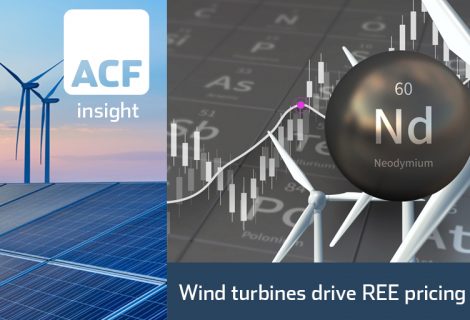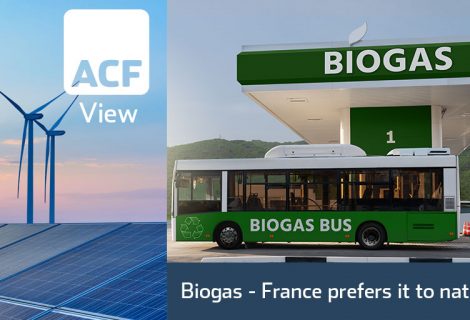What part will Geothermal Energy play in the Renewables investment landscape?
Geothermal energy (GTE) exploits the thermal energy beneath the Earth’s surface located near geologic “hot spots”. This energy is contained in steam, hot water (from hot water reservoirs within the cracks of the sub-crust of the Earth) or dry hot rocks. Examples of natural geothermal energy include active volcanos, geysers and hot springs.
The principle for bringing geothermal energy to the surface is water injection deep underground, which is returned as steam or hot water (for electricity generation or heating respectively). The heat or steam recovered from underground is used to drive turbines of electric generators and/or for heating systems e.g. in homes, greenhouses and public amenities such as swimming pools.
Examples of industrial applications of geothermal energy are food dehydration (drying) and in the mining sector, raffinate heating in copper processing and enhanced heap leaching for gold and Silver.
However, accessing geothermal energy is not a simple process. A geothermal power plant project has various stages. The key stages are prefeasibility study, exploration, feasibility study, drilling and development of the different wells (production or re-injection wells), plant construction and the construction of the steam gathering system. Geothermal project planning and financing has much in common with the exploration and production of a mining project.
How we capture this renewable energy resource and how we use it
Geothermal energy exploitation can, arguably, be divided into four broad categories:
Geothermal power plants – These power plants exploit the heat found below the Earth’s surface to make steam to drive turbines that produce electricity. GTE electricity generation power plants differ by generation technology – direct steam, flash, or binary. They also differ by cooling technology -water and air-cooled.
Geothermal heat pumps – These pumps exploit heat below the Earth’s surface to heat water or provide heat for buildings. Direct use and district heating systems – hot water near the earth’s surface is piped into buildings for heat. This Geothermal plant system is especially popular in Iceland, where it heats the whole city of Reykjavik.
Hot dry rock system – This is another more advanced geothermal plant system. The hot dry rock system is a process whereby the earth’s surface is drilled in order to reach hot rocks, water is then pumped down onto the rocks, which heat the water and send it back up to the Earth’s surface. The hot dry rock system is used for heating (producing hot water) and to drive turbines, i.e. generate electricity.
The attractive qualities of geothermal energy
Geothermal energy is considered the greenest power source available today. First and foremost, geothermal energy is considered ecologically clean because the systems used do not burn fuel to generate electricity (at least not in the way fuel consumption is commonly understood).
Geothermal plants emit 97% less sulphur compounds (the cause of acid-rain) and about 99% less carbon dioxide than the equivalent capacity fossil fuel power plants.
Geothermal plants use less acres per megawatt (1-8 acres per MW) than nuclear or coal power plants, thus making GTE a better prospect in terms of land use than its peers.
Energy from under the Earth’s crust combined with GTE plants and processes is a renewable heat source that never dries up (sustainable and constant supply). In addition, once the water or steam is used, it can be pumped back into the ground and reused, in what is termed a closed system (perhaps the ultimate recycling process).
GTE powerplants are highly efficient at heating and cooling because geothermal energy is about moving heat and not creating it; the equipment operates more efficiently.
As a general rule, it is economically more efficient to operate a natural gas furnace compared to an electric furnace. Gas furnaces also heat water and air much faster than electric furnaces. From a purely renewable perspective an electric furnace is more efficient, i.e. it converts nearly all the energy it uses into heat energy.
A geothermal pump however, beats both a gas and an electric furnace. Geothermal heating costs are as good as, and often better than, those of a gas furnace and can heat water and air as fast.
Base load electricity generation is also a natural role for geothermal energy. Base-load power plants are designed to produce the minimum electricity required to maintain the grid and not designed to respond to peak demands in electricity. Base load plants ensure electricity or heat generation 24/7, and reliable consistent energy production is an essential ingredient for a stable economy.
The risks
There are various significant challenges that the operator and developer of a GTE power plant faces.
Firstly, geothermal plant project developers face a poor funding system. Secondly, GTE development periods are long – 5 to 10 years for a typical power plant. Thirdly, drilling is expensive and exploitable sites are scarce. Those that are exploitable are often situated in isolated locations and far from loading centres. If the first three obstacles can be overcome, then the developer faces two more hurdles.
One, there is the challenge of creating unintended geological instability – sink holes, earthquakes, release of greenhouse gases from deep beneath the surface such as carbon dioxide.
Two, social acceptance is also needed and crucial to fluently implement and develop these projects. Social acceptance will come by controlling and minimising the environmental impacts and delivering benefits to the communities, close to or served by GTE plants.
The investment case
The physical and chemical characteristics of geothermal lead to stable pricing in the market (i.e. less volatility) and, after the initial ‘sunk cost’, a low operating cost. In short, neither revenues nor costs fluctuate aggressively at the operational stage. This revenue and cost stability leads to ‘predictable’ long-term (and so low risk) returns, and this is always attractive to certain types of large-scale institutional investors, such as pension and insurance funds.
The primary risk is the exploration phase, this requires a different type of investor – those who are familiar and comfortable with the risks and rewards of a mining exploration project.
The markets for heating and base load energy generation are vast, and for mining investors, could it be an opportunity to produce the same potential returns as those from exploration for other resources? There is the added advantage that GTE comes without the tag of environmental destruction (whether fair or unfair) and it is always more fun to be on the right side of history.
Our View:
Geothermal energy is, it seems, a fixed part of our renewable future – reliable, operationally safe and cost effective – but it can do better. We have outlined the risk factors above and we are of the view that all the challenges can be met (physical, chemical and financial).
We accept that to facilitate accelerated development, a lot must still change – such as creating favourable regulatory environments, tax incentives and permits. Some technological help may also be needed, like improved reservoir management or the use of wellhead power plants that could provide quicker access to geothermal electricity.
The progression and investigation of geophysical solutions and advanced technologies in drilling will help reduce the cost and risk of geothermal energy exploration and production. There is also room for further research to improve environmental safety. It would be a loss to our economic future if increased research into geothermal energy exploitation was not supported.
In spite of the challenges, the positive attributes ensure that geothermal energy remains a key response to slowing or reducing global warming and producing clean energy.
Anne Castagnede, Sales & Strategy at ACF Equity Research, comes from a large cap high touch luxury goods background and joined ACF first quarter 2019













